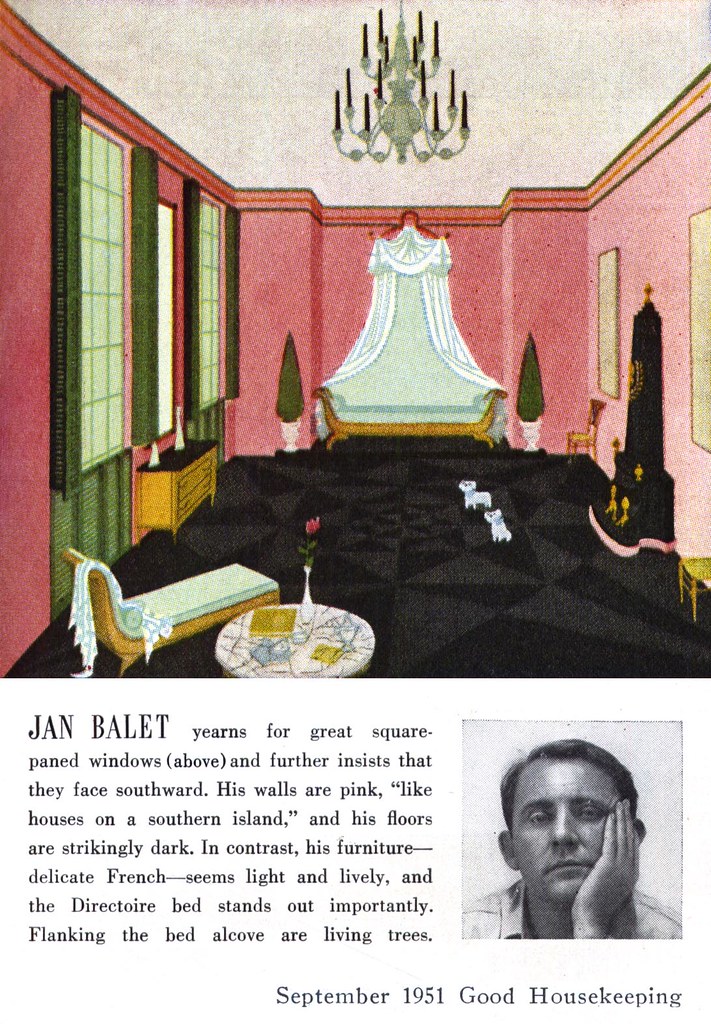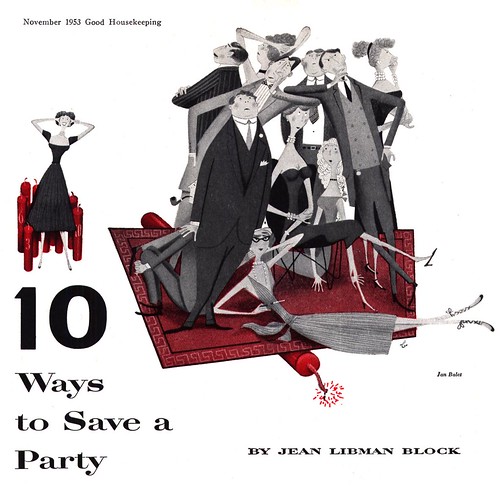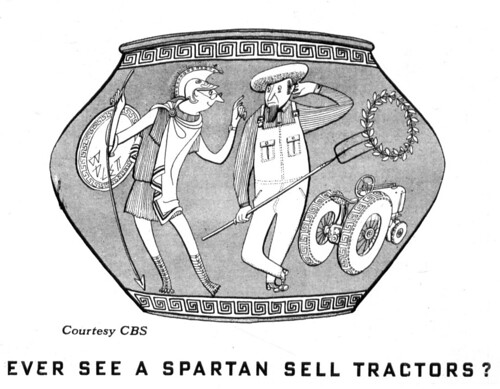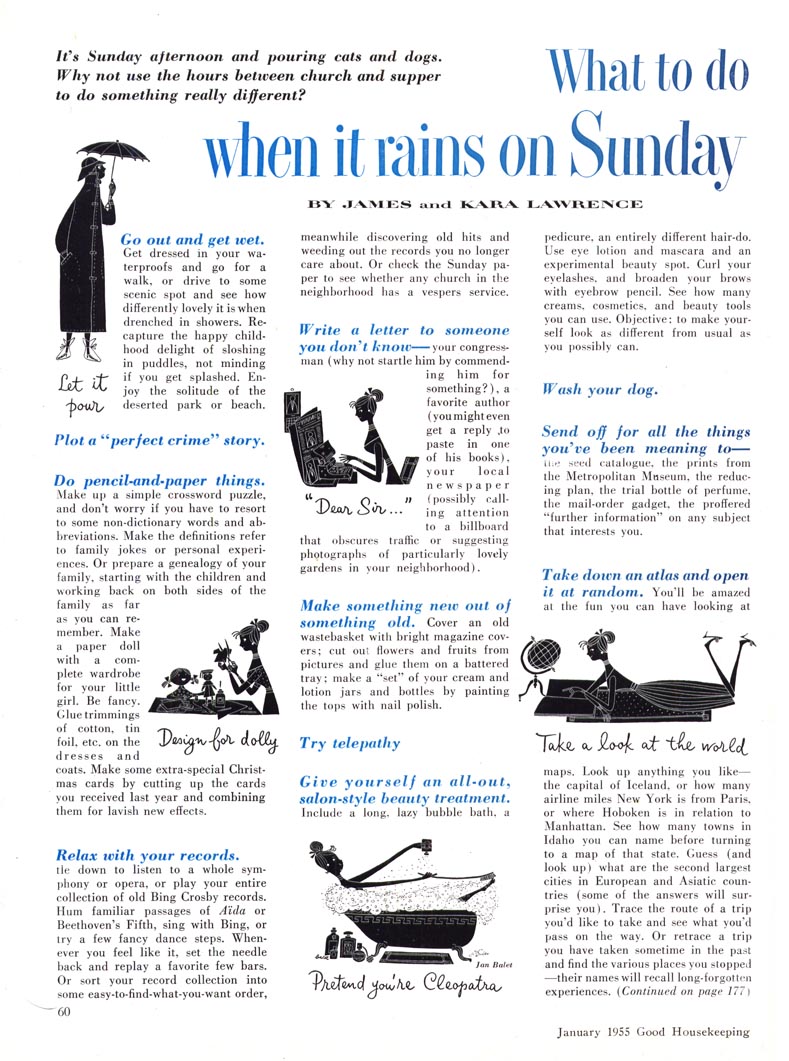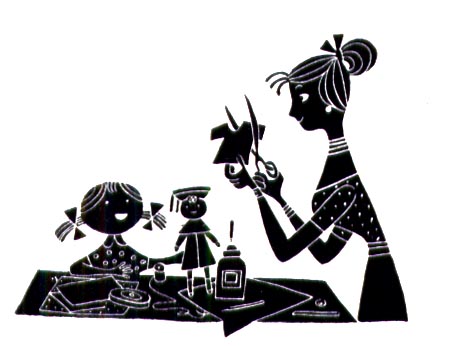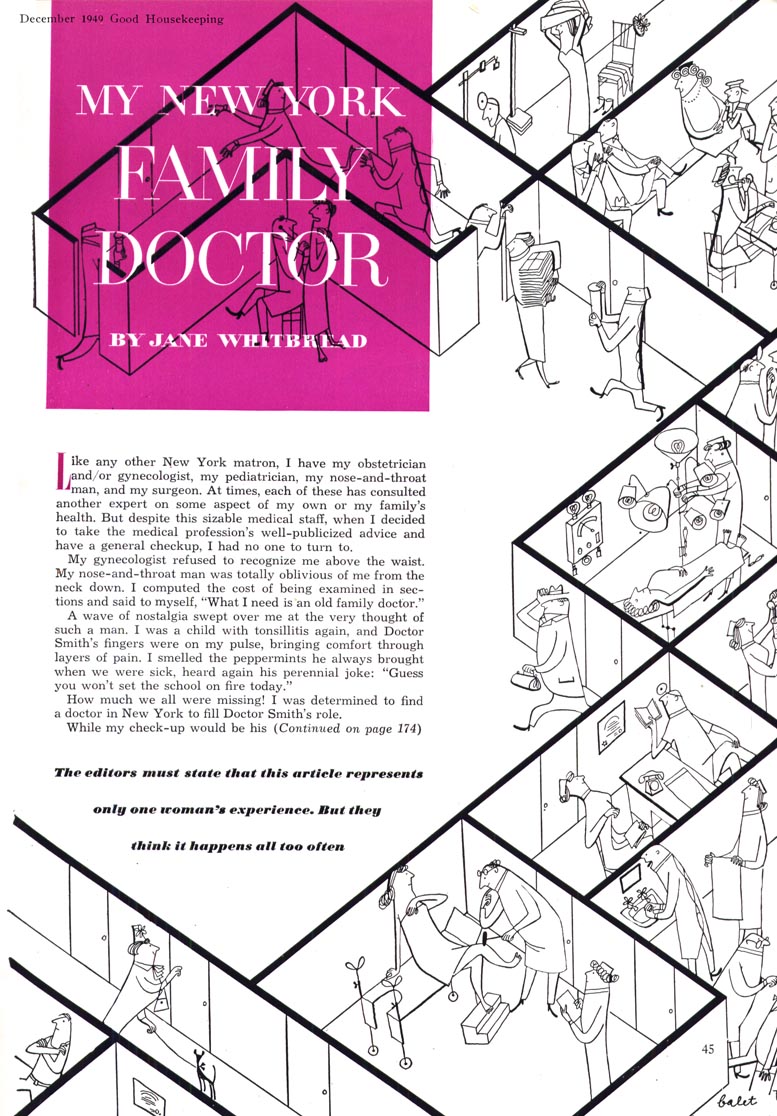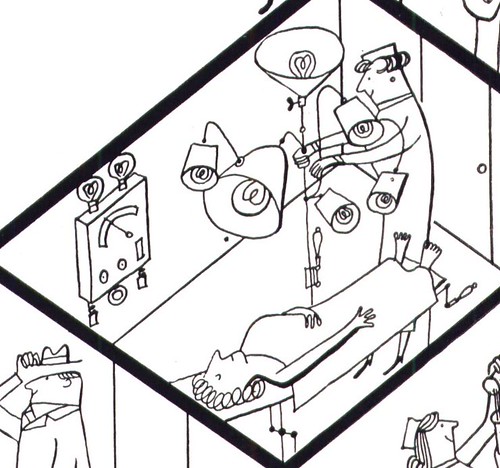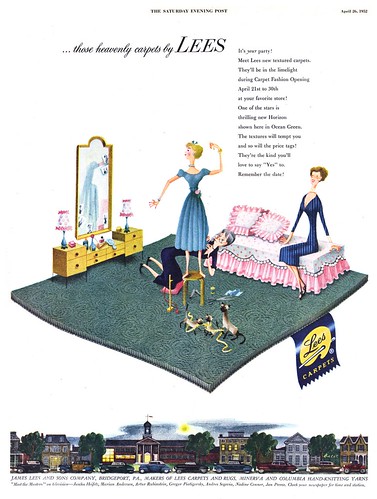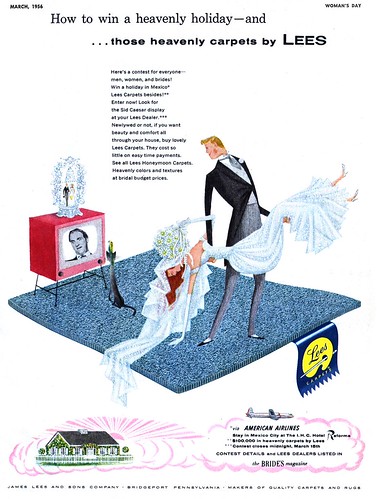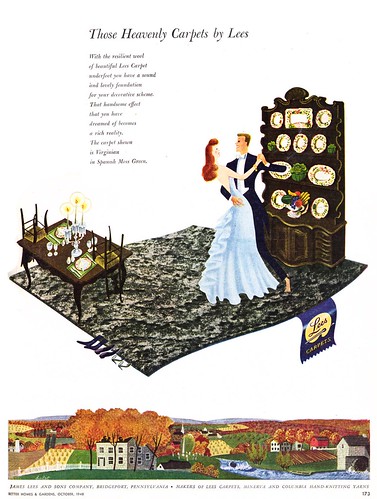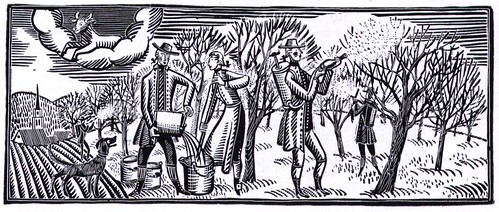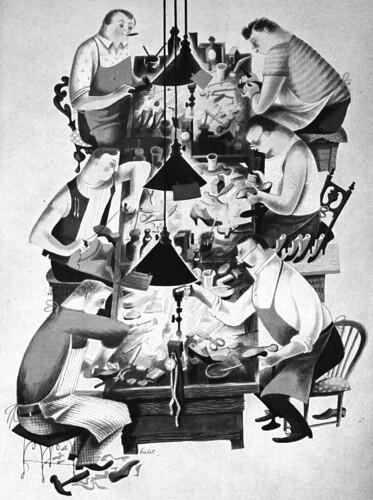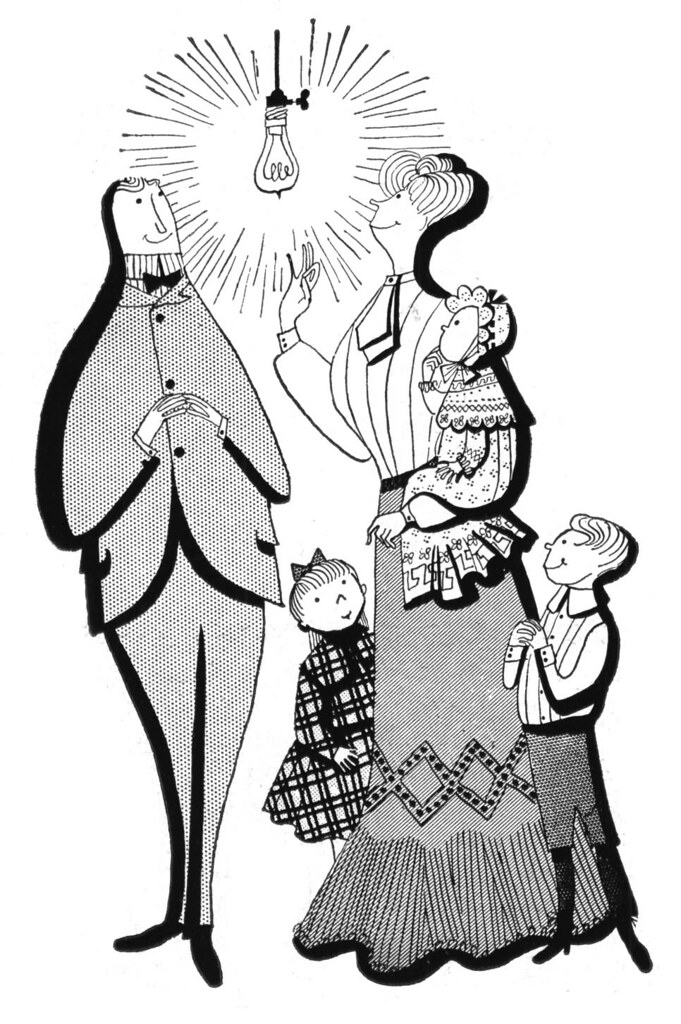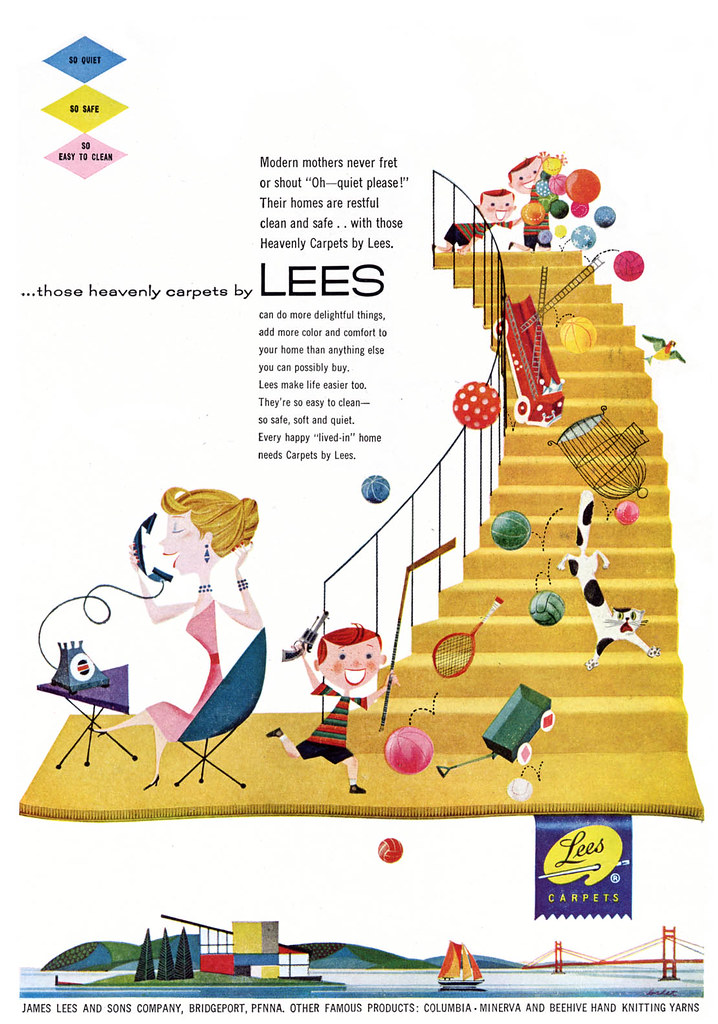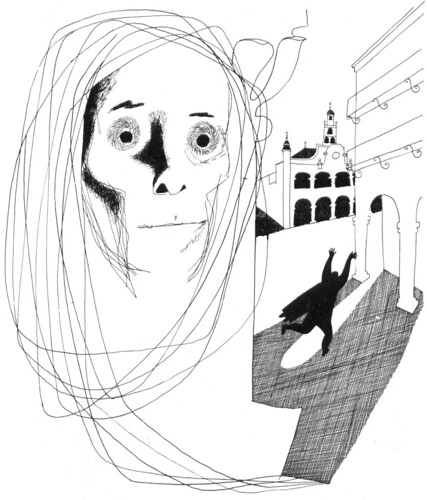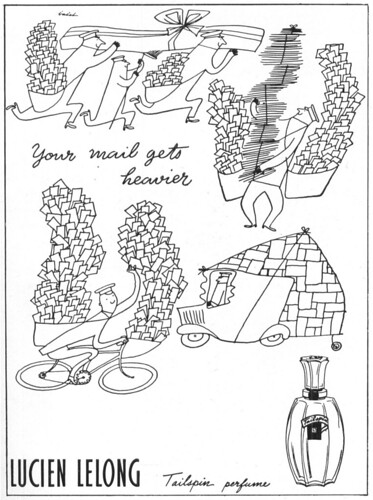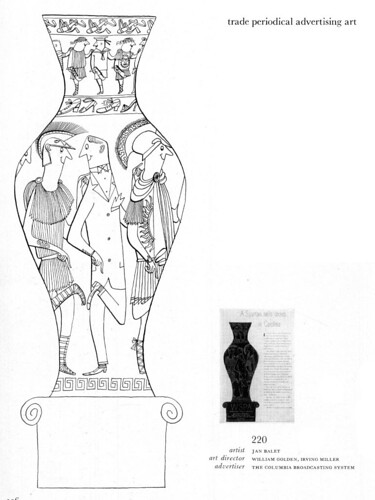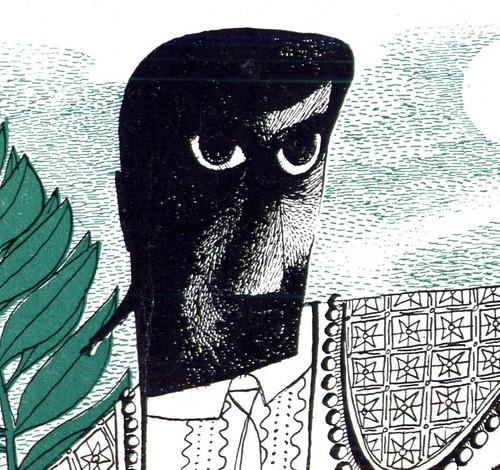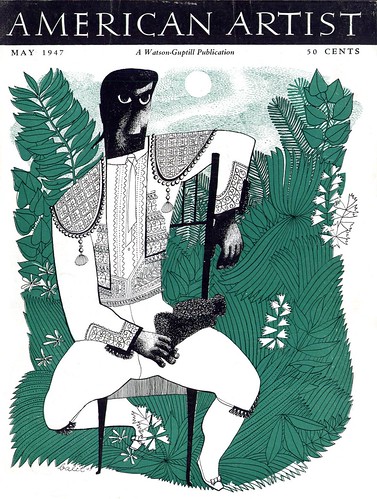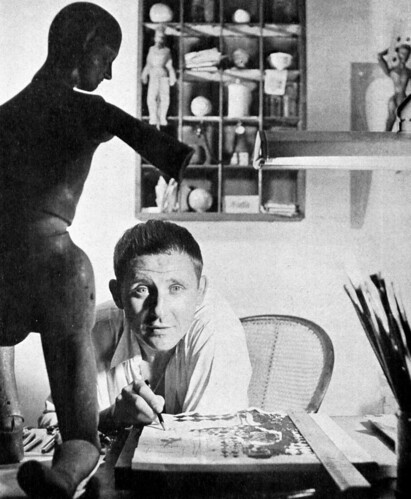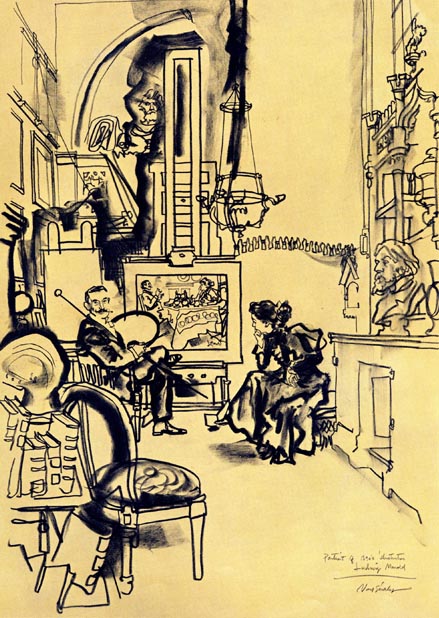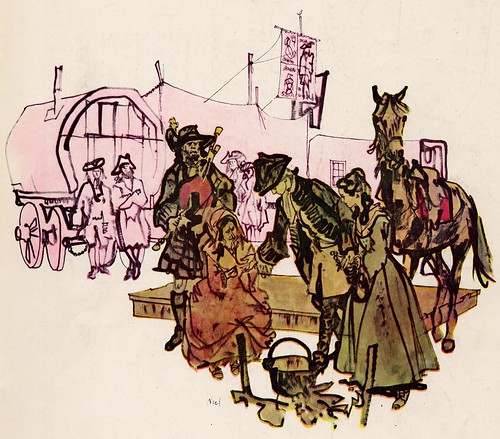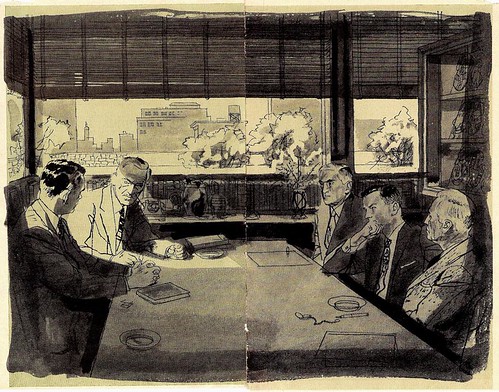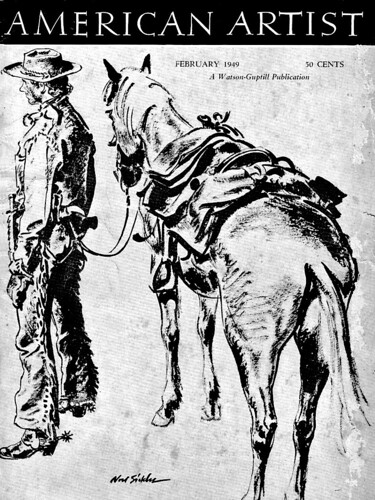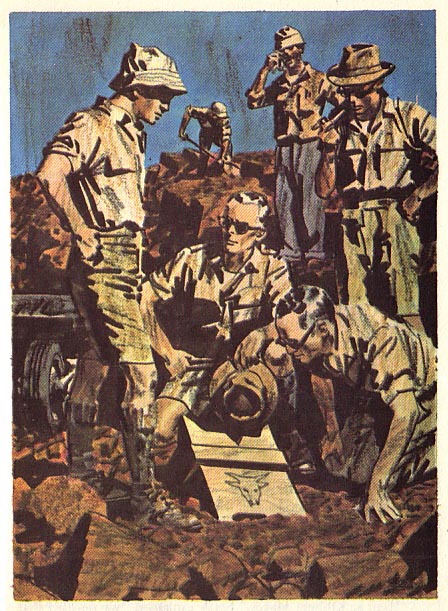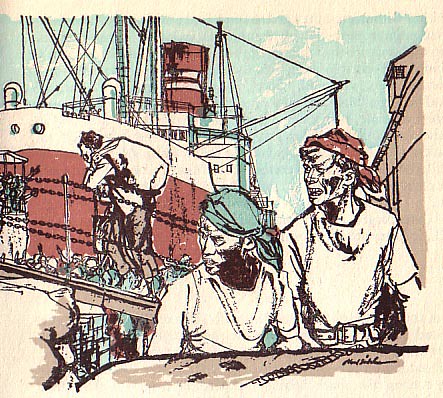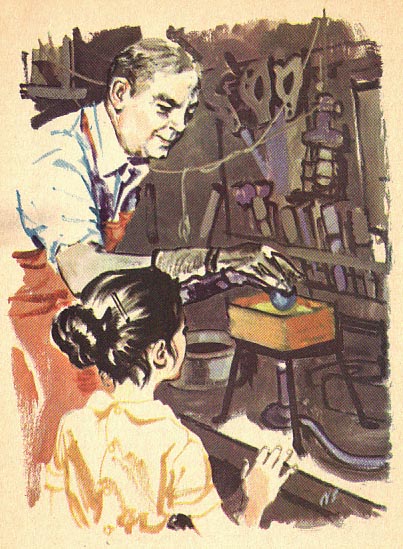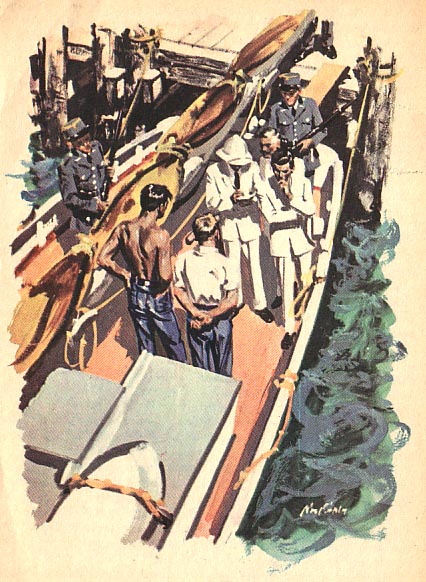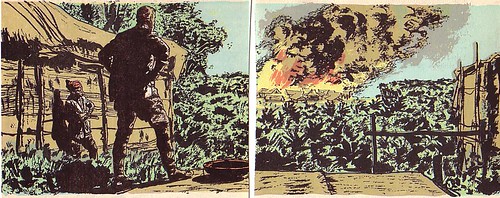Illustration must have been good to Jan Balet. By the time the feature article on him appeared in
American Artist in 1946, he already had a residence and studio in New York City, a summer home in Long Island and his own plane. Not bad for a German immigrant who had arrived broke and unknown just eight years earlier!
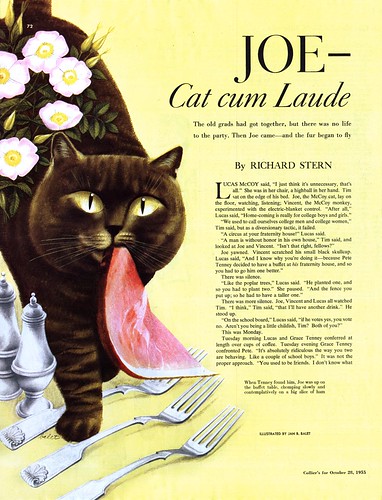
Jan Balet's work began appearing in
Collier's magazine around 1955. Though Balet was still doing his popular "graphic whimsy" style for the Lees Carpet ads and for clients like
Good Housekeeping, the
Collier's work suggests that Jan Balet was searching for new directions.

In the mid-50's the
Cooper Studio/New School style commanded the lion's share of the illustration market. The Avante-Gardists like
Robert Weaver were making inroads with some art directors and the Decorative style was still an emerging flower. The Storybook stylists like
Art Seiden,
Aurelius Battaglia and the
Provensens really were focusing their efforts on storybooks...
Just how did Jan Balet fit into 'the big picture'?
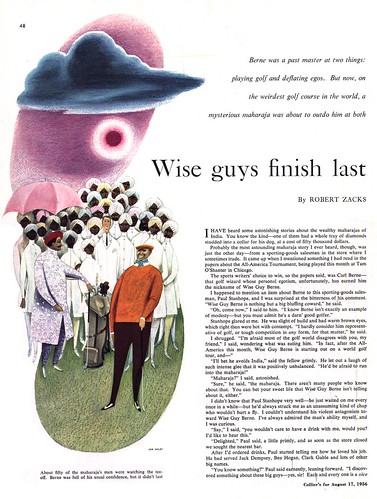
Perhaps he felt a bit like the odd man out...

Jan Balet loved to travel. In 1961 he visited Texas, Arizona and New Mexico. The experience must made quite an impression. The three pieces below came out of that trip and, in their naiveté, show a new sophistication.
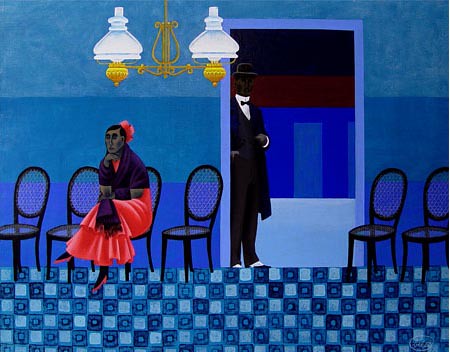
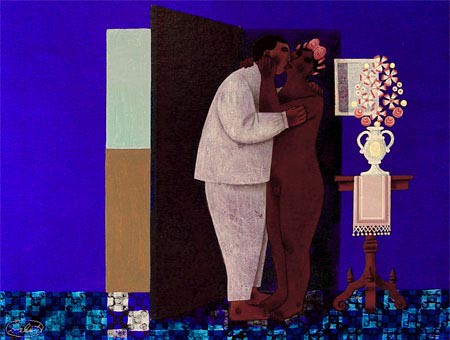
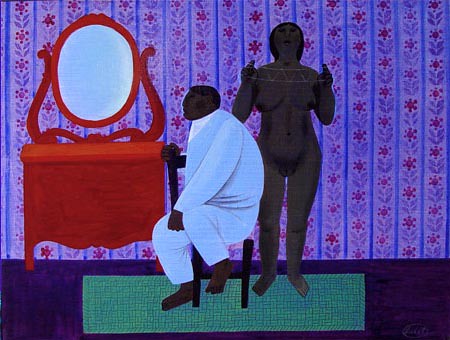
Keeping in mind that the early 60's was a difficult time for the illustration business, when many artists were searching for new markets, new directions...... could this - and Balet's desire to explore his creative potential - be why he returned to Europe in 1965?
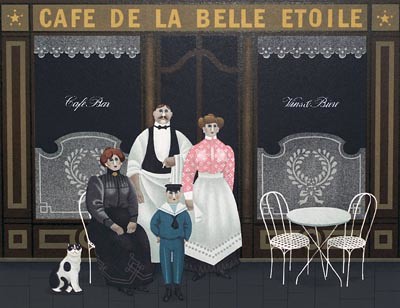
Balet settled in Munich and began doing lithographs, like the ones show here, for the fine art gallery market. Later, in 1978, he moved to Estavayer-le-Lac, Switzerland and continued to produce limited edition prints and posters. A quick search on the internet turns up
many examples like these available from galleries all over the world.
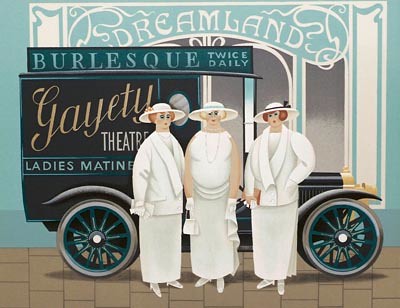
One gentleman who knew Balet years ago writes at
askart.com, "He was a great person to know, with an honest, salty sense of humor which one sees in his artworks."
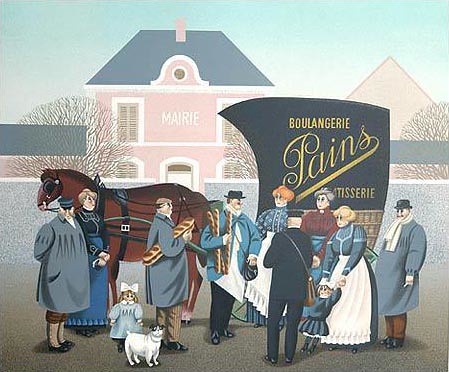
If Jan Balet is still with us (I found nothing to suggest he has passed away) he will be 95 this year.
My
Jan Balet Flickr set.
